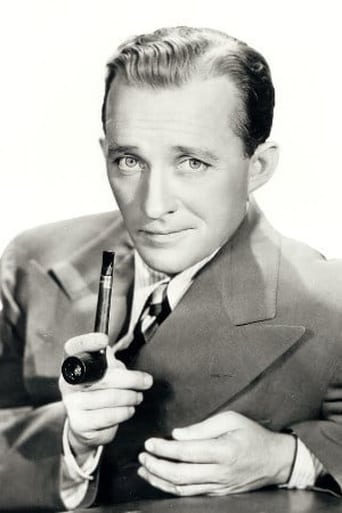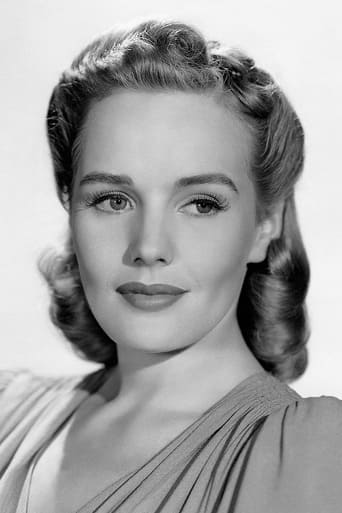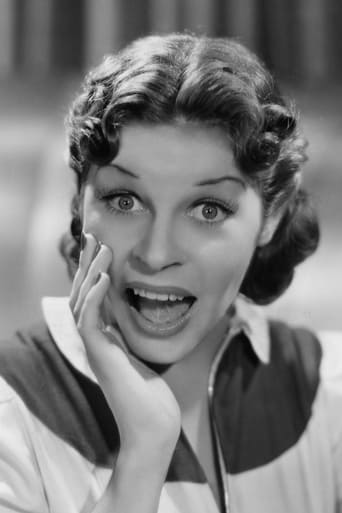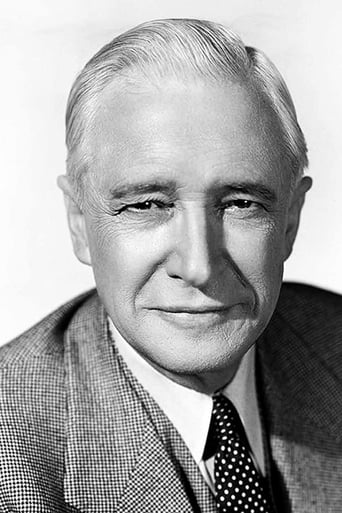ThiefHott
Too much of everything
Fluentiama
Perfect cast and a good story
Matrixiole
Simple and well acted, it has tension enough to knot the stomach.
Tayyab Torres
Strong acting helps the film overcome an uncertain premise and create characters that hold our attention absolutely.
JohnHowardReid
Australian release: 26 September 1936. Sydney opening at the Prince Edward: 26 September 1936 (ran only two weeks on a double bill with Big Brown Eyes). 87 minutes. SYNOPSIS: Cowboy en-trains from New York to Green Pastures, Arizona, with his prize bull, "Cuddles". He finds a stowaway in the box car who passes herself of as Lois Hall, a cook. In actual fact, she is a runaway heiress. NOTES: Crosby made only two westerns in his entire screen career. The other: "Stagecoach" (1966). Domestically, one of the top twenty box-office successes of 1936. Oddly, the movie failed to draw anything like similar crowds overseas.Film debut of Martha Raye. Also the "official" screen debut of Bob Burns, although he had in fact appeared in ten or eleven films beforehand.COMMENT: Despite many slight imperfections, "Rhythm on the Range" impresses as an absolutely delightful musical comedy. Let's get the piffling problems out of the way first: It's obvious the screenplay was re-written on the run, which accounts for the various names attributed to the Frances Farmer character, the inconsistent spelling of Jeff's surname, the introductory "Narrow Gage" for James Burke who is addressed in the following scene as "Wabash" and the fact that two different players (one a hobo, the other a ranch-hand) bear the confusing name, "Shorty". Different synopses of the plot appear in various books (in the earlier scenario, Martha Raye was a society woman), and one of the subsidiary story threads involving the three hobos comes to a sudden dead end. Lovely Martha Sleeper plays an agreeably acidic society girl in the opening reel, but then disappears. We keep waiting for her to come back. Viewing the wonderful trailer, you can actually see some great shots which are not in the film at all. At least two additional song numbers were captured on film by energetic director Norman Taurog but left on the cutting-room floor. That's a pity, but it's an even greater shame the cutter didn't also delete a muffed encounter between Martha Raye and Samuel S. Hinds in which the veteran actor fails dismally as a straight man. Fortunately, the scene only runs two minutes, but that boring and embarrassingly inept little interlude blots an otherwise perfectly scintillating piece of lavishly-produced, merrymaking entertainment. It's the main reason I'd give Rhythm on the Range only 90% instead of 100%. (Another, but less important point, is that I don't like Leonid Kinskey's loudmouth impression of a Russian ranch-hand).Now for the good news: Bing not only plays the cowboy as if to the saddle born but sings (and can he sing!) four great numbers, including the haunting "Empty Saddles", the wistful "Round-up Lullaby", the lilting "I Can't Escape from You", and the rousing production number, "I'm an Old Cowhand" which must be counted one of the top novelty tunes of all time. It was Bing Crosby (and no-one else) who propelled it on to the charts. It's also nonsense to say (as some critics have done) that Crosby is upstaged by his co-stars. He is always in charge, always the lead. Supporting him are gloriously radiant Frances Farmer (who was never more attractively photographed and costumed), "pioneer woman" Lucille Gleason, plus "the newcomers", Martha Raye and Bob Burns.Admittedly, Miss Raye does have some sidesplitting lines and bits of business. But so does James Burke (and I've not read anywhere that Burke put the Bing in the shade). One of Burke's funniest lines: "I just had to conk somebody!" I also loved this exchange: PORTER: "Want a Redcap, lady?" EMMA: "What? With a brown jacket and a checkered skirt? Are you kiddin'?"
vincentlynch-moonoi
This film was later remade as "Pardners" with Dean Martin and Jerry Lewis. While I'm an avid Martin fan, I'm no fan of Jerry Lewis, and I very much like Bing Crosby and like Martha Raye. My suggestion is to watch "Pardners" instead; it doesn't drag as this film seems to. And, while aspects of both films are different, there are other parts that are surprisingly similar.The problem with this film is that, as much as I like Crosby in both musicals and dramas, I have a difficult time imagining him as a bronco riding steer wrestler. It just doesn't work.What does work are the songs, particularly an outstanding rendition of "Empty Saddles" (its debut). In terms of plot...pretty light.Aside from not being very believable as a rough and tumble cowboy, Crosby is still his pleasant self on screen, and this film was right at the beginning of what I think were Bing's best early years on film.I was not impressed with Frances Farmer here as the love interest. I know she had an "interesting" and tragic life, but I have yet to be impressed with any of her film roles.Bob Burns is sort of humorous as the side kick, as is Martha Raye as the Easterner who goes after the hick Westerner. Samuel S. Hinds, a great character actor is along for a few scenes, and Lucile Gleason in a rather truncated role that just seems to hang out there with little real connection to the rest of the film.Even as somewhat of a Crosby fan, this film had trouble holding my attention. It's not bad, nor great.
mark.waltz
She's café society, He's the class act of "Hee Haw". When they meet, it's happening one night all over again as the cowboy and the lady end up finding romance in spite of each other. Actually, she's deceiving him all along, pretending to be a cook hopping a freight cross country and ending up sharing spaces with him and his prized bull. Bing Crosby and Frances Farmer don't necessarily have the greatest chemistry, but his easy going charm does bring out a twinkle in her eye.In second comic relief leads (besides the bull) are Bob Burns and a big mouthed clown named Martha Raye. She's made up to look rather dowdy but there is a striking woman under all the facial grimaces and self deprecating humor. Smaller roles are filled by Samuel S. Hinds as Farmer's wealthy dad and Lucille Gleason as her masculine aunt who came from the hills herself. Gleason is outrageous and steals every moment that she's in the film.Musically, this only features several songs, but the way Crosby sings them makes them stand out even more. I prefer Crosby's 1930 style which was much more intense and thus more sultry. It's easy to see why he was such a box office draw considering that he wasn't exactly great to look at. Raye jumps in with a bouncy Mr. Paganini" which became her signature. There's very little dancing, so this isn't up there with the big musicals that Warner Brothers was putting out at the time, but filled with romance and comedy, it ultimately ends up being a total crowd pleaser.
lugonian
RHYTHM ON THE RANGE (Paramount, 1936), directed by Norman Taurog, stars none other than Bing Crosby in a change of pace where he saddles up in western attire playing a singing cowboy, or by profession, a cattleman. In spite of his starring status, the scenario actually focuses more on Frances Farmer in her third feature film performance and rising to star prominence.Those familiar with the Academy Award winning Frank Capra directorial 1934 comedy of IT HAPPENED ONE NIGHT, (runaway heiress meeting ordinary guy on a bus from Miami to New York), or others like it, will take notice in some similarities here (runaway heiress meeting ordinary guy on freight train from New York to Arizona), with of course, some revisions: Doris (Frances Farmer), a Park Avenue heiress, daughter to Robert Holloway (Samuel S. Hinds), the richest banker of New York, is making arrangements for her upcoming wedding to the wealthy Wall Street financial vice president and polo player named John Ashley Dolby III (a character never seen, except through a still photograph). Penelopie Ryland, "a true pioneer woman" (Lucille Webster-Gleason), her visiting aunt from Green Pastures, Arizona, realizes immediately that her niece is not marrying for love and tells her so. Later that night, Penelopie, who is sponsoring a rodeo contest at Madison Square Garden, makes an accusation to the crowd that embarrasses Doris enough to leave the stadium before things get underway. At the rodeo, Jeff Larrabee (Bing Crosby), assisted by his sidekick, Buck Eaton (Bob Burns), participates himself in every event in order to win the grand prize, the 2,000 pound champion bull named Cuddles. Following the event, Jeff arrives at his box car with Cuddles on time, while Buck and their boss, Penelopie, miss the train. As for Jeff, he find he's not traveling entirely alone when he notices Doris (under the guise of Lois Hall), which turns to a series of arguments between them. As for Buck, he encounters the daffy Emma Madison (Martha Raye), a Macy's shop girl taking a vacation to visit her brother.On the musical program, songs include: "Empty Saddles" (by Billy Hill and J. Kiern Brennan); "Sundown" (by Walter Bullock and Richard Whiting); "I Can't Escape From You" (by Leo Robin and Richard Whiting/ all sung by Bing Crosby); "Mr. Pagagini" (by Sam Coslow/ sung by Martha Raye); "Drink It Down" (by Leo Robin and Ralph Rainger/ sung by Leonid Kinskey and cowboys); and "I'm an Old Cowhand From the Rio Grande" (by Johnny Mercer/ sung by The Sons of the Pioneers, Bing Crosby, Bob Burns, and cast). While "I'm an Old Cowhand" is the most memorable song in this production, "Empty Saddles" and "I Can't Escape From You" are also as good as it gets. On a slower tempo is "Sundown," which Crosby sings to the bull to calm down and go to sleep on the freight train. So soothing is his vocalizing that he even succeeds in giving Frances Farmer her lullaby of rest as she lays up in a pile of hay for the night.Making her movie debut in RHYTHM ON THE RANGE is Martha Raye. Arriving a bit late into the story, her familiar mannerisms and screwball antics help give the movie some uplifting moments. In spite the fact that Raye's style of comedy may or may not influence the younger generation of it's interesting to point out that in her day, the lady with the wide Joe E. Brown-type mouth was hailed as one of the funnier of the slapstick comediennes. Aside from a drunken scene where she sings a portion of "Love in Bloom" (a little inside humor since this popular song was initially introduced by Bing Crosby in the college musical, SHE LOVES ME NOT, in 1934) to Samuel S. Hinds, Raye even sings her signature number of "Mr. Pagagini" while sober. Bob Burns, the slow-witted philosopher who enjoys himself by playing his own musical instrument called the "bazooka," makes good comic foil to Raye, and would work together again in other feature comedies. Others in the supporting cast include: Martha Sleeper, George E. Stone, James Burke, Warren Hymer and Clem Bevans.As much as the runaway heiress theme has become common place in many 1930s comedies, RHYTHM ON THE RANGE comes across quite well with its predictability. Crosby is no stranger in encountering troublesome heiresses on screen. With Frances Farmer (1914-1970) being one of the most attractive of his co-stars, he did come across the spitfire of Carole Lombard in WE'RE NOT DRESSING (1934). Even some of the dialogue "I've never been so serious in all my life," used here is echoed from WE'RE NOT DRESSING. There is even some fine western scenery during its second half making one wish the film were produced in Technicolor. Overall, RHYTHM ON THE RANGE makes satisfying viewing during its 87 minutes of screen nonsense.Out of circulation from the commercial late night television markets for since the early 1980s, RHYTHM ON THE RANGE will never cease to be out of view due to its current availability on either home video (distributed in 1995, preceded by a theatrical trailer) or DVD (double featured with Crosby's 1940 release of RHYTHM ON THE RIVER) or broadcast of Turner Classic Movies (TCM premiere: August 3, 2016) and the Encore Western Channel. In conclusion, Look fast for a young Roy Rogers, future star in Republic Studios "B" westerns of the 1940s and 50s, appearing briefly in the "I'm an Old Cowhand" festivity sequence. (***).




